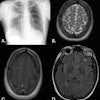CHICAGO - An investigational computer-aided detection (CAD) system may allow for improved detection of lymph nodes, according to research from the University of Munich in Germany.
"CAD tools can increase the number of lymph nodes found by a radiologist and probably will also help to evaluate them more accurately," said Dr. Peter Herzog. He presented his team's research on Thursday at the 2008 RSNA meeting.
The German study team sought to evaluate a CAD prototype (Definiens, Munich) for detecting lymph nodes. Twenty MDCT datasets of the neck, chest, and abdomen were selected randomly from routine clinical cancer staging examinations and were anonymized.
Two radiologist readers then independently analyzed the axial images of 5-mm slice width, reporting every lymph node they found greater than 5 mm. All studies were also reviewed by the CAD system.
A consensus panel of two experienced radiologists then validated the lymph nodes found by each reader and the CAD system, as well as detected any additional lesions. The panel confirmed 589 lesions with diameters ranging from 5 mm to 64 mm.
Of the 589 lesions, 301 (51%) were found by the readers, while 288 (49%) were missed. Reader 1 solely detected 102 lesions, while 165 lesions were marked only by reader 2. Only 34 lesions were found by both readers.
"This resulted in a very, very poor Cohen's kappa value level of inter-rater agreement of 0.089," Herzog said. "So there was almost no agreement between these two readers."
As for CAD, the CAD tool detected 851 lesions, of which 442 (52%) were confirmed by the consensus panel. The remaining 409 were dismissed as false-positive results.
CAD and the readers together marked 260 lesions, and the CAD system uniquely detected 241 lesions (41%). Forty-one nodules were detected only by the readers, while 47 were found only by the consensus panel.
CAD detected significantly more lymph nodes than the pooled readers (p < 0.001), Herzog said.
Working without CAD, reader 1 had a sensitivity of 23%, while reader 2 had a sensitivity of 34%. If CAD had also been used during the interpreting process, the sensitivity of reader 1 would have climbed to 84%, while reader 2 would have produced a sensitivity of 91%.
While the CAD system would have offered significant value as a complementary tool for radiologists, the researchers still don't foresee a standalone role for the CAD system. It suffers from a high rate of false-positive findings and an inability to assess additional clinically relevant findings in the images, Herzog said.
By Erik L. Ridley
AuntMinnie.com staff writers
December 4, 2008
Related Reading
Breast MRI can guide radiation therapy to lymph nodes, September 22, 2008
Copyright © 2008 AuntMinnie.com


















